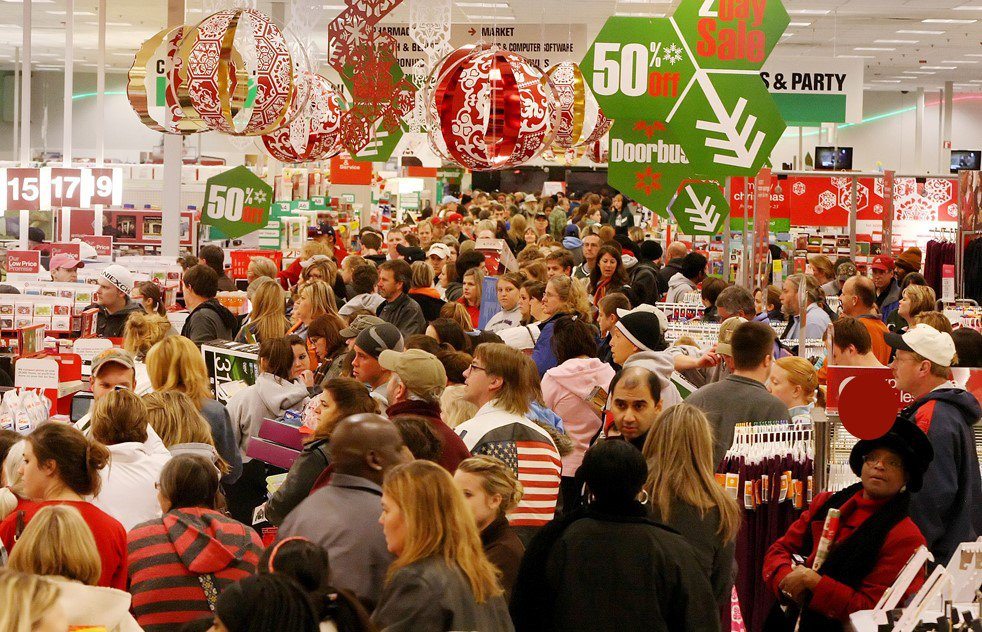The holiday season is swirling with omnichannel and online retail news. Target’s ecommerce efforts paid off over the so-called Cyber 5, which begins Thanksgiving Day and ends Cyber Monday. Digital media properties, including Clique, PopSugar and Domino, are bringing their lifestyle brands to brick-and-mortar for the month of December. This week we’ll look into these stories as well as how the Wall Street Journal is personalizing its mobile app.
Target’s Online Sales Growth Tops Amazon and Walmart’s For Cyber Weekend
More data is coming out about shopping during the Cyber 5, and Retail Dive reports that, Target’s online sales grew 44 percent year-over-year. Surpassing growth at both Amazon and Walmart, Target.com’s sales were nearly 15 times greater on Thanksgiving Day than they are on a typical Thursday. The company more than quadrupled its order volume, welcomed three times more unique buyers to its website, and boasted Cyber Monday sales that were nearly 10 times last year’s.
Target’s marketing efforts this year included populating its site and blogs with gift guides and holiday ideas. “They’re really working to create products together and really think about how people are buying,” said Matt Sargent, senior vice president of retail at Frank N. Magid Associates, speaking with Retail Dive.
(Image source: WLSSD)
Lifestyle Media Rushes to Pop-Up Shops
Lifestyle publishers such as Clique, Domino, and PopSugar are partnering with brands to build pop-up shops that they hope will help advertisers cut through the holiday marketing buzz and blitz, reports DigiDay. These efforts offer an edge over brand-only pop-ups by extending and amplifying consumer reach through editorial content.
December pop-ups, all based in New York City, include:
- Clique: Byrdie Beauty Lab, a 2,000-square-foot shop co-created with Nordstrom, showcasing beauty products and offering free beauty classes taught by big-name makeup artists.
- Domino: a 3,000-square-foot SoHo location co-branded with Home Depot offering free designer and Instagrammer workshops, as well as a product selection curated by Domino editors. Domino will cover the workshops in its online editorial content, and any mentions of that brands in that content will be supplemented by ads.
- PopSugar: Deck the Hauls, a one-day Old Navy-supported installation at St. Ann’s Warehouse in Brooklyn, will include a so-called JingleBelt — a conveyor belt of curated gifts that attendees can pick and choose from to create gift boxes. Old Navy products will be mentioned in a live gift guide, and purchase links will be added to videos and social media promotion.
All three of these efforts take the mix of brick-and-mortar, brands and editorial and turn them into one really, really big ad that includes links to track consumer purchases.
The Wall Street Journal Redesigns Its Mobile App with Personalization
Last month, The Wall Street Journal released a redesigned mobile app that includes its first personalized feature called “My WSJ.” The app serves up stories based on subscribers’ reading habit to create a “passively personalized” news feed.
“We wanted you to know very quickly that [News] is what editors are recommending, and [My WSJ] is recommended based on your habits,” the Jordan Sudy, the Journal’s iOS product director, told Niemen Lab. Since the feature was released, the paper says it has seen increased page views.
In addition to the personalized news feed, the app team has also added some other types of personalization, such as an option to follow specific journalists and get notifications when they publish a story. The paper is also planning a relaunch of Markets Data Center which will include a feature to sign up for alerts about specific companies.
